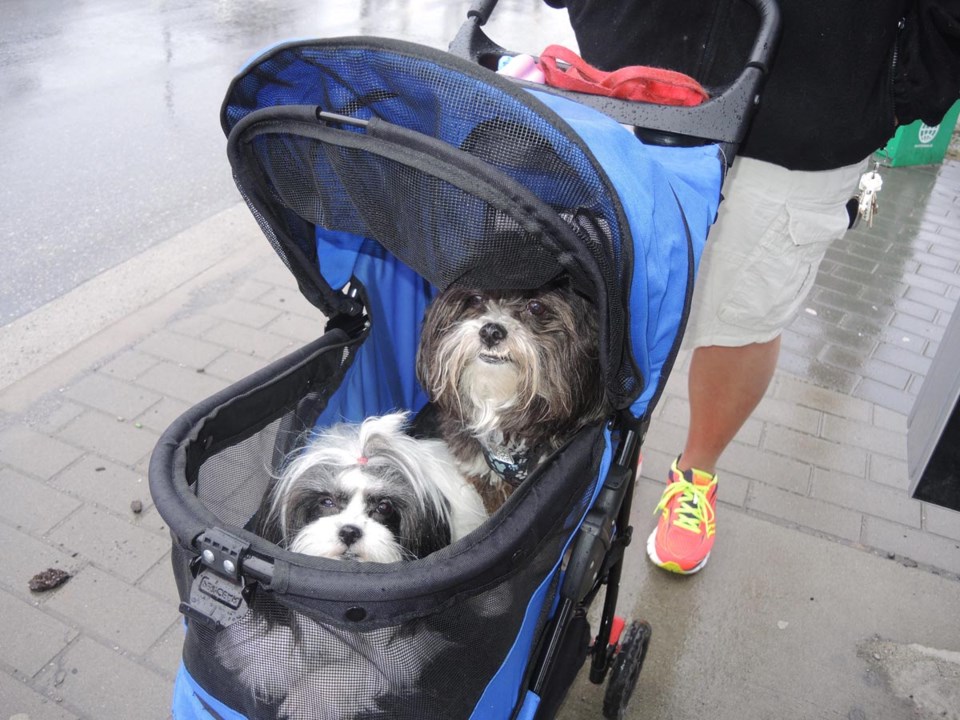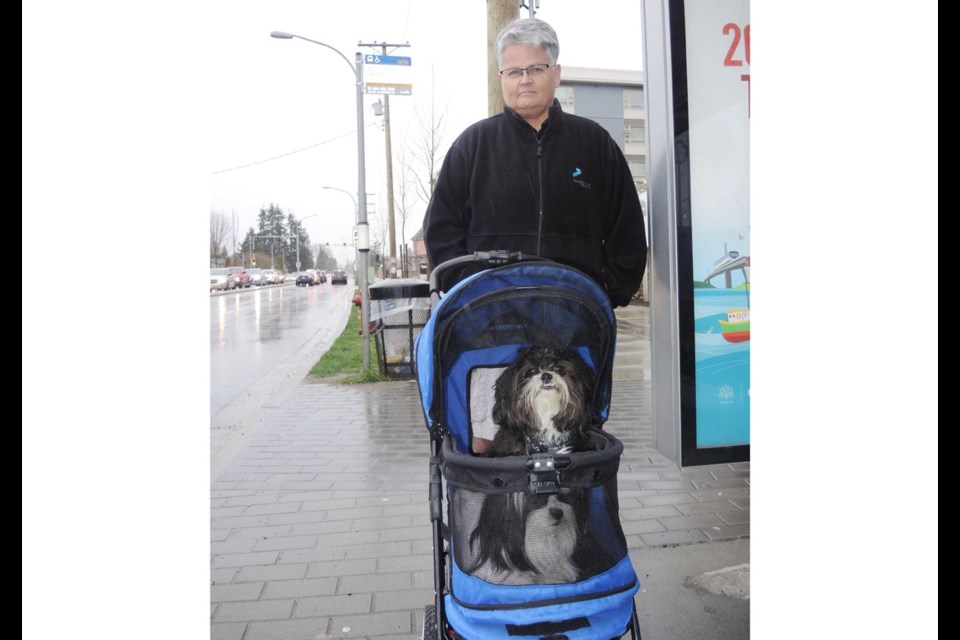What do you get when you cross a 60-year-old woman with two tiny dogs, self-contained in a pet stroller and a transit bus?
What you don’t get is access to the 36-seater, 77-passenger capacity means of public transportation.
Why? Because TransLink’s policy doesn’t allow pet strollers — which are exactly the same dimensions as a child stroller — on their buses.
It may sound like a joke, but for Jennifer Hailstone and her two pets – Lexi, a Maltese, and Lily, a Shitzu cross – there isn’t any punchline.
And she certainly wasn’t laughing a couple of weeks ago when she was left stranded at the Tsawwassen ferry terminal in the pouring rain, after two separate bus drivers and then a taxi driver refused to take her and her dogs back to her Richmond apartment.
After all, ever since she decided to start transporting Lexi and Lily in the pet stroller last summer (health issues now prevent her from carrying them in a crate), she’d never had a problem visiting her daughters in Victoria.
“The day before, I had gotten on (the bus) at Bridgeport and there were no issues at all heading to the ferry terminal,” said Hailstone, who lives in a condo in The Gardens at Steveston Highway and No. 5 Road, where she’s the building manager.
“But coming back (the next day), I got off the ship, lined up like everyone else for the bus (in the cold and rain)...after paying, I was told, rudely, by the driver, ‘Oh, by the way, you can’t come on my bus with that, pointing to the dogs in the stroller.”

The driver of the next bus also refused, as did a taxi driver, rendering Hailstone marooned in the rain.
“I was told by that bus driver it must be a carrier you carry and must be placed on your lap,” she said.
“If you have ever taken the bus from the ferry, there is everything under the sun brought onto the bus; some suitcases are bigger than my stroller and they’re never told to put it on their lap.
“I have seen people not pay to bring on huge items, yet, here I was, denied a ride. I do not drive — never have — and rely solely on transit.
“Now I have no way to get myself and my dogs to Victoria to see my family and I feel I am being discriminated against because of my age and the fact I am unable to carry them.”
Hailstone — who says she can’t afford to kennel her dogs when travelling and doesn’t know anyone well enough to dog-sit while she’s away — said, on the bus, it only mentions that pets be in a pet carrier.
“There’s no mention of size and how to manage the carrier once on the bus. I assumed because I spent over $200 at a pet store, it would be deemed a pet carrier, as well,” added Hailstone, who moved from Victoria in 2002, and tries to visit her daughters on the Island at least twice a month.
“I’m more than willing to pay extra on the bus, if that’s the issue.
“I have never placed my dogs in the aisle and if I took up an extra seat, I would stand up.”
Hailstone received an apology from a Coast Mountain Bus operations manager for the way she was spoken to by the driver.
However, a spokesperson for TransLink, although acknowledging Hailstone’s predicament, said it was important to make sure there is room for people on the transit system who need the priority seating area.
“TransLink policy doesn’t allow pet strollers on transit to prevent overcrowding and ensure room for customers with mobility assistance devices, such as wheelchairs,” the spokesperson added.
“This is a long-standing policy. Information about pets on transit and pet strollers specifically can be found on our website or by calling customer information.
“We are always looking for ways to improve the system and can consider this feedback, should our pets on transit policy ever be reviewed in the future.”
According to TransLink, pets are only allowed on board in small, hand-held cages, which must fit on your lap and must be fully enclosed with no part of the animal exposed.
It may also be placed on the floor, but must not impede free passage of customers and must not block any doors. If only standing room is available, the transit operator will refuse passage to you and your pet.
Only one hand-held approved cage or container is allowed per customer and dog strollers are not permitted on transit.



